Related Research Articles

Final Fantasy VII is a 1997 role-playing video game developed by Square for the PlayStation console and the seventh main installment in the Final Fantasy series. Square published the game in Japan, and it was released in other regions by Sony Computer Entertainment, becoming the first game in the main series to have a PAL release. The game's story follows Cloud Strife, a mercenary who joins an eco-terrorist organization to stop a world-controlling megacorporation from using the planet's life essence as an energy source. Ensuing events send Cloud and his allies in pursuit of Sephiroth, a superhuman who seeks to wound the planet and harness its healing power in order to be reborn as a god. Throughout their journey, Cloud bonds with his party members, including Aerith Gainsborough, who holds the secret to saving their world.
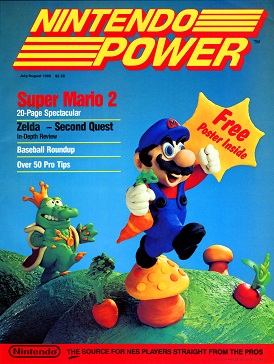
Nintendo Power was a video game news and strategy magazine from Nintendo of America, first published in July/August 1988 as Nintendo's official print magazine for North America. The magazine's publication was initially done monthly by Nintendo of America, then independently, and in December 2007 contracted to Future US, the American subsidiary of British publisher Future plc. Its 24-year production run is one of the longest of all video game magazines in the United States and Canada.

Electronic Gaming Monthly (EGM) is a monthly American video game magazine. It offers video game news, coverage of industry events, interviews with gaming figures, editorial content and product reviews.
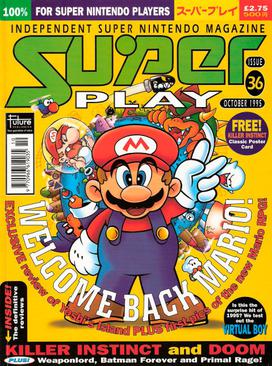
Super Play was a British Super Nintendo Entertainment System (SNES) magazine which ran from 1 October 1992 to September 1996.

Crash, stylized as CRASH, is a magazine dedicated to the ZX Spectrum home computer, primarily focused on games. It was published from 1984 to 1991 by Newsfield Publications Ltd until their liquidation, and then until 1992 by Europress. It was relaunched as a quarterly A5 magazine in December 2020 with the backing of the original founders.

GamePro was an American multiplatform video game magazine media company that published online and print content covering the video game industry, video game hardware and video game software. The magazine featured content on various video game consoles, personal computers and mobile devices. GamePro Media properties included GamePro magazine and their website. The company was also a part subsidiary of the privately held International Data Group (IDG), a media, events and research technology group. The magazine and its parent publication printing the magazine went defunct in 2011, but is outlasted by Gamepro.com.

The One was a video game magazine in the United Kingdom which covered 16-bit home gaming during the late 1980s and early 1990s. It was first published by EMAP in October 1988 and initially covered computer games aimed at the Atari ST, Amiga, and IBM PC compatible markets.

Zero was a video game magazine in the UK, published monthly by Dennis Publishing Ltd. between November 1989 and October 1992. It won the InDin Magazine of the Year award in both 1990 and 1991, and was also briefly the best-selling multi-format 16-bit computer magazine in the UK.

Official Xbox Magazine (OXM) was a British monthly video game magazine which started in November 2001 around the launch of the original Xbox. A preview issue was released at E3 2001, with another preview issue in November 2001. The magazine was bundled with a disc that included game demos, preview videos and trailers, and other content, such as game or Xbox updates and free gamerpics. The discs also provided the software for the Xbox 360 for backward compatibility of original Xbox games for those without broadband and Xbox Live access. From January 2012, OXM no longer included a demo disc. In mid-2014, the U.S. version was merged into the UK version on the website, which lasted only a few months until Future plc announced that it was closing its website along with all the other websites that Future has published, including Edge and Computer and Video Games. In February 2015, OXM and all of Future's video game websites were redirected into GamesRadar.
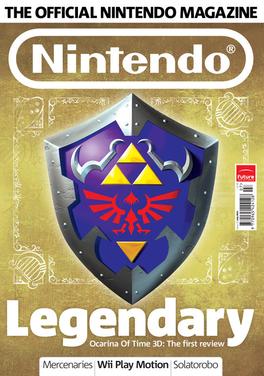
Official Nintendo Magazine, or ONM, was a British video game magazine that ran from 2006 to 2014 that covered the Nintendo DS, Nintendo 3DS, Wii, and Wii U video game consoles released by Nintendo.
VideoGames & Computer Entertainment was an American magazine dedicated to covering video games on computers, home consoles and arcades. It was published by LFP, Inc. from the late 1988 until the mid-1990s. Offering game reviews, previews, game strategies and cheat codes as well as coverage of the general industry, VG&CE was also one of the first magazines to cover both home console and computer games. The magazine gave out annual awards in a variety of categories, divided between the best of home video games and computer video games. The magazine featured original artwork by Alan Hunter and other freelance artists.

GameNOW was a United States-based video game magazine that was published by Ziff-Davis from November 2001 to January 2004. A total of 27 issues were published. In addition to video game consoles like PlayStation 2, Xbox, GameCube, and Game Boy Advance, GameNOW also covered games for personal computers.
Bill Kunkel was a graphic novelist as well as pioneering professional wrestling and video game journalist and critic from the 1970s until his death in the early 2010s. During his time working with the video game industry, Kunkel authored numerous strategy guides, co-designed several video games, served as an expert witness in three court cases, and taught courses in Game Design for the University of Nevada, Las Vegas (UNLV). Kunkel served as the executive editor of Electronic Games Magazine and the editor-in-chief of Tips & Tricks magazine, writing columns and comics for several magazines and game sites. He often wrote under nicknames, the most common of which were "The Game Doctor", and "Potshot".
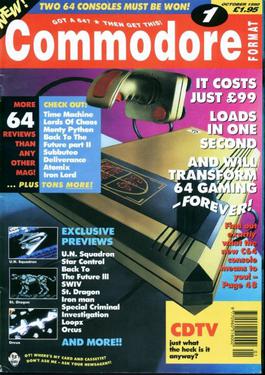
Commodore Format was a British magazine for users of the Commodore 64 home computer. It was published on the third Thursday of every month. All 61 issues were produced by Future plc. These came towards the end of the machine's commercial life - from October 1990 until October 1995.
Igromania is a Russian video game website and formerly a magazine.

Oyungezer is a Turkish video game magazine published monthly.

FirstPlay was a video gaming online magazine published by Future Publishing for Sony Computer Entertainment Europe. It was produced by the team behind PlayStation Official Magazine and features video reviews and previews and screenshots of upcoming and recently released PlayStation 3 games. Episodes were released weekly on the PlayStation Store where users could choose to purchase a single episode or a 90-day subscription at a discounted rate.

PlayStation Underground was an American video game magazine, originally published by Sony Computer Entertainment America. The magazine focused on the PlayStation fanbase, including gaming on the original Sony PlayStation and the PlayStation 2, and was promoted as a "PlayStation fan club". Unlike its paper-based counterpart the Official U.S. PlayStation Magazine, PlayStation Underground came in the form of CD-ROMs which could be played on the PlayStation and PlayStation 2 consoles. Subscribers were also given access to a members-only website. The magazine released its first issue on March 26, 1997 and its final issue in 2001. The magazine released a total of seventeen issues during its active years. The magazine was eventually merged with Official U.S. PlayStation Magazine in 2001 when it was discontinued.
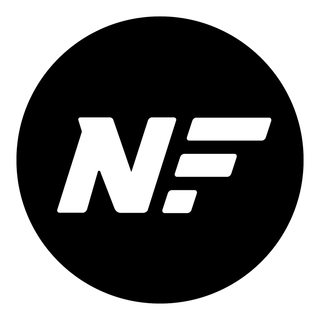
Nintendo Force, or NF Magazine, is a bi-monthly magazine that centers upon various Nintendo hardware products. In December 2012, IGN editor and magazine founder Lucas M. Thomas announced his intention to release the magazine, stating that he had begun to plan for the magazine upon hearing of Nintendo Power's cancellation. The magazine includes staff members from Destructoid, GoNintendo, IGN, Nintendojo, 1Up.com, and the writer and founder of the online comic Brawl in the Family, and Nintendo World Report, among others.
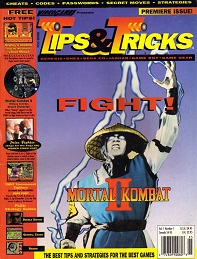
Tips & Tricks was a monthly video game magazine devoted to the subjects of video game cheat codes, strategy guides and lifestyle content. Unlike most video game magazines, it did not include critical reviews of video games and was not a primary source of video game industry news. Instead, it focused on gameplay instructions and hidden "Easter eggs" relating to games that its readers might have already purchased.
References
- ↑ Brandon Guerrie (August 28, 2012). "In loving memory: How EGM², Expert Gamer, and GameNOW scarred me for life". GamesBeat. Retrieved 4 May 2016.